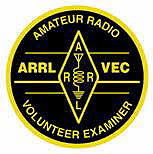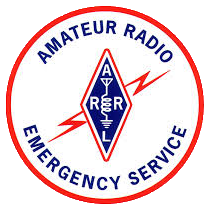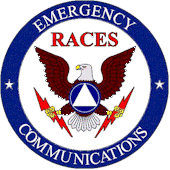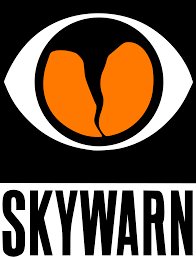Best Power Practices I
- Details
Operating a mobile rig in a motor vehicle or as a base can create some interesting challenges, and while many installations may work, they may be optimal, and could potentially damage your radio or automobile. We’ll break things down into a few different topics.
Connecting Vehicle Power
Most motor vehicles are not really wired for an accessory that draws the current a typical mobile amateur radio will. Still, many of us have (or do) run our radio using the “Accessory” or “Cigarette Lighter” jack. That jack is typically rated for 10 amps, and for intermittent usage. A conventional amateur radio with 50 Watts of output will consume 11 amps or more. At best, you are maxing out usage, at worst exceeding capacity. Additionally, the adapter connection does not provide a solid ground or hot connection, often increasing current draw. There is little other wiring in the car that can handle that load either.
So, if you’re at or above capacity, why doesn’t the fuse blow? Because fuses require an excess of current for some sustained period of time. Even though the fuse isn’t blowing, the wiring is getting hot, and the insulation will eventually begin to break down.
Running power specifically for your radio is the best practice.
Cross-Band Repeating
- Details
Cross-Band repeating has great potential for use in EMCOMM, extending our ability to utilize handhelds as well as providing gateways to more distant repeaters.
First, a quick explanation of what cross-band repeating is: the use of radio equipment that can simultaneously transmit on one frequency what is received on the other, much as a normal repeater. The twist is that the two frequencies will be on different bands, usually 2M and 70cm. The reason for this, is the significant difference in frequencies allows the simultaneous transmit and receive with simple circuits, rather than large and bulky duplexors required for same-band repeating.
Many in our group, who can't directly reach the repeater with an HT, utilize cross-band repeat capability. To cross-band, merely run an HT in simplex on an appropriate 440Mhz frequency and on your mobile or base station set one VFO to the same simplex frequency as your HT and operate the other VFO as normally for the repeater. When the radio is in cross-band mode it will transmit everything that comes in on the repeater output to the 440Mhz frequency, and repeat everything from the 440Mhz frequency to the repeater. Your HT now has the same range as your base or mobile rig!
Roll-Up VHF/UHF Antennas
- Details
Emergency Communications deployment has similarities to camping and backpacking trips, where you need to pack everything you need with you without overloading yourself. Striking the proper balance is challenging, because no matter how hard you try you will usually find something you should have packed and something you should have left behind, because we never know what the requirements of the deployed location will be.
It's safe to say that one item likely to be on any deployment list is some form of enhanced antenna to improve the ability to reach out to distant repeaters, or even function as an ad-hoc cross-band repeater.
Arrow makes a great dual band J-pole that breaks down to be pretty portable, but requires a pole to be mounted to, as is the case with most commercial antennas. It's possible to bring a tripod along, or some type of mount that can be attached to your vehicle, but that may require your deployment be restricted to a parking lot or your vehicle. Sometimes that will be the case by necessity, but it does isolate you from your served agency members.
Drone Carried Emergency Repeaters
- Details
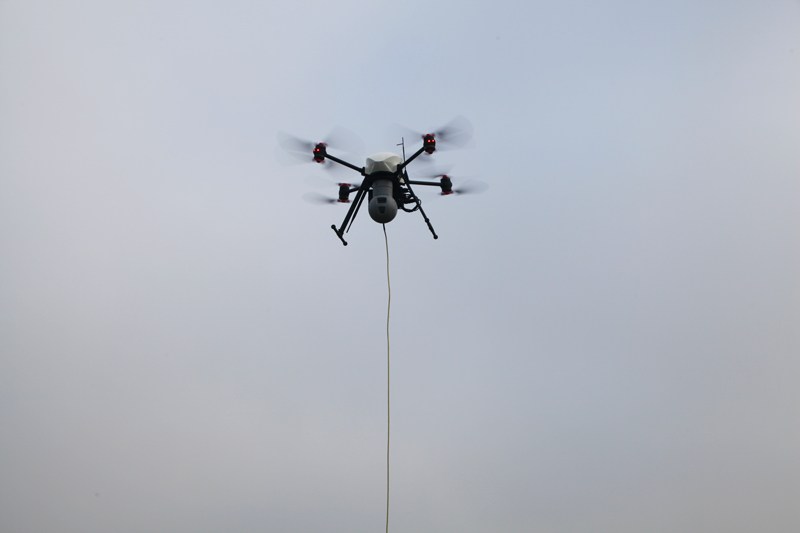 One of the challenges of EMCOMM is we are often deployed at locations where infrastructure may be damaged, and that could include any repeaters in the area. As our simplex efforts have shown, simplex communications is challenging to say the least. Portable repeaters are a potential solution, but in some situations there may not be a high spot to deploy it to, or there may not be power to that area, and it may not even be accessible by vehicle to power it off its alternator.
One of the challenges of EMCOMM is we are often deployed at locations where infrastructure may be damaged, and that could include any repeaters in the area. As our simplex efforts have shown, simplex communications is challenging to say the least. Portable repeaters are a potential solution, but in some situations there may not be a high spot to deploy it to, or there may not be power to that area, and it may not even be accessible by vehicle to power it off its alternator.
People have discussed the use of balloons, but in that case, in addition to the balloon, you need the helium or hydrogen and it presents challenges keeping it properly tethered, not to mention requiring a particularly large balloon to carry a repeater payload or tether an antenna coax from the ground, much less carrying enough power capability to operate the equipment.
Some are proposing that Drone Carried Emergency Repeaters are a possible solution.
Near Vertical Incidence Skywave (NVIS) Antennas
- Details
Why NVIS?
We as amateur radio operators are typically focusing our efforts on HF towards long distance communication, "DXing". You would think the same would be true for emergency communications as well; however, in many instances what is needed is solid communications within the area of the emergency and the areas immediately surrounding it. During an incident we will often need to communicate to different parts of the state and, perhaps, adjacent states to exchange information to the "outside world" until normal communications resumes.
So, that fantastic all-band fan dipole antenna you have 80 feet in the air, while great for talking to China from West Georgia, will quite possibly make it very difficult, if not impossible, to reliably communicate with Macon. Why? because HF DX communication relies on atmospheric skip, and your fantastic antenna is liable to be throwing your signal at an angle up towards the horizon, right over the heads of the people around you, only to bounce off the atmosphere and land in Asia or Europe or California. What is ordinarily a fantastic thing is actually proving to be a hindrance for emergency communications.
Snow Spotter Program
- Details
Most amateur radio operators are familiar with the SKYWARN program, and reporting of severe weather conditions. We usually associate the SKYWARN program with reporting heavy rain, hail, and even tornadoes. But, the National Weather Service also runs an associated Snow Spotter program, gathering data to assist them in their mission to protect life and property, as well as developing better storm models.
Snow spotting, like conventional storm spotting, has specific conditions and information requirements. The NWS wants reports of:
- Change in precipitation type (rain to snow, snow to freezing rain, etc)
- Snow Accumulation of 1 inch or more
- Heavy Snowfall Rate (example: snowing at 1 inch per hour)
- Significant Blowing or Drifting snow
- If the snow, ice, or blowing snow is having a major impact on travel
- If what is occurring is not what is in the forecast
- Anything significant that you think we should know about
SKYWARN / Storm Spotting
- Details
Amateur radio and the National Weather Service have a unique and exciting relationship, where amateur radio operators with an interest in meteorology can combine those two interests and provide valuable public service.
The National Weather Service (NWS) sponsors a weather spotting program open to all interested citizens, but with special consideration for amateur radio operators. The NWS SKYWARN program is a multi-faceted program designed to train public safety personnel, amateur radio operators, and citizens at large in the basics of storm spotting and reporting.
Where things get really interesting for amateur radio operators is the NWS maintains amateur radio stations at their centers, usually working in conjunction with repeater owners who link repeaters together forming a wide-area linked repeater network for amateur radio operators to report real-time directly to the NWS!
In Georgia, the NWS Peachtree City office is the center of the action for amateur radio operators operate equipment that, in conjunction with the linked repeater network, can maintain contact with amateur radio operators / storm spotters all across the state.
What is ARES?
- Details
ARES is an acronym for "Amateur Radio Emergency Service", an arm of the Amateur Radio Relay League (ARRL), composed of volunteer Amateur Radio operators interested in serving their communities, state, or nation in the event of an emergency. Although ARES is the creation of the ARRL, it is not required that you be an ARRL member to participate.
ARRL is recognized nationally as "THE" amateur radio communications organization. ARES has agreements with the Federal, State, and many local governments as well as Non-Governmental Organizations (NGOs) to provide assistance upon request.
While there are other ways to be involved in emergency communications through direct affiliation with NGOs like the Red Cross, the Salvation Army, or RACES (a government sponsored program), ARES has the broadest range of potential opportunities for service in the event of an emergency.
EMCOMM and ARES
- Details
As we’ve previously discussed, Amateur Radio Emergency Communications has changed from the days where a very informal response among a specialized group of technical individuals could provide support in an emergency in an improvised way.
The changes in how we are expected to respond are largely the result of the evolution of emergency response organizations within the government and without.As previously mentioned, many organizations like the Red Cross, Salvation Army, and even the government itself, have created their own communications teams comprised of Amateur Radio operators who meet their requirements.
Organizations like the Red Cross and Salvation Army are about providing direct aid during and following an emergency. Communications is one small component of that overall mission. So, within the Red Cross, for instance, the communications team members are Red Cross volunteers who happen to be Amateur Radio operators, not the other way around.
Page 3 of 7
